By Vinita Wagh
Photography: Courtesy the architects
Read Time: 3 mins
PES-Architects present China with The Fuzhou Strait Culture and Art Centre, a catalyst that induces cultural momentum in a city dominated by rapid development.
The studio interlaces the brilliance of the Jasmine blossom with its significance to Mawei New Town, Fuzhou, to conceptualise a winning proposal that gives the city flower architectural expression, translating its petals into 5 venues (Opera House, Concert Hall, Multi-functional Theatre, Art Exhibition Hall and Cinema Centre) – fragmented and human-scaled, yet unified.
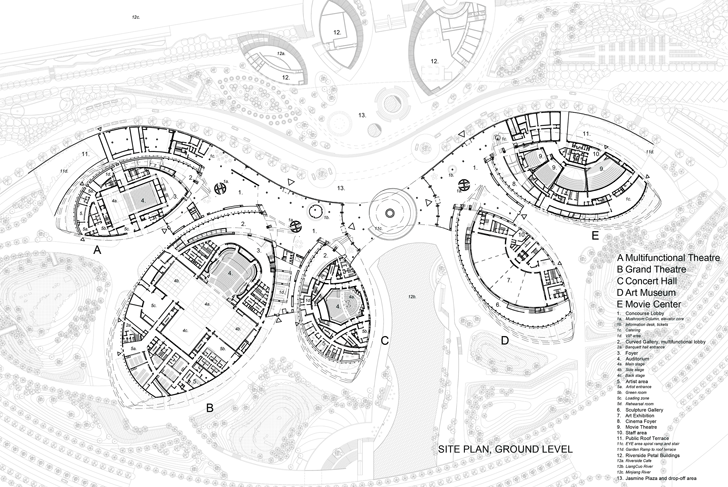 |
| plans |
Nestled between the Minjiang River and Jasmine Plaza on one side and the Jasmine Gardens on the other, the venues connect at the cultural concourse and the roof terrace – the latter easily accessed by ramps from the Plaza and the Garden. A spiral ramp too vertically connects the public areas. The seamless connection of the complex continues through easy circulation patterns that weave together the indoors and the outdoors.
Public interior spaces open out into the surrounding Gardens and the Natural Reserve beyond. A promenade route along the river, at the underground level, connects the landscape to the interiors as well as to a metro node. The venues boast of a semi-public gallery at their core, mirroring the curvature of the main façade, clad with bamboo profiles. ‘Mushroom Columns’ and ‘Sky Blossoms’ camouflage services and introduce daylight into the lobbies respectively.
But the highlight of this new cultural centre lay in the use of ‘China White’ ceramic as a material that stems from its worth in China’s Silk Road history and constitutes the chief material exploited in the project. Taiwanese ceramic artist Samuel Hsuan-yu Shih expertly crafts the dramatic interiors of the auditoriums incorporating new technology, innovative techniques, and solid bamboo parts. Clad with topographical ceramic panels, the aesthetic commands adaptable panels – engraved and mosaic, to realise high-quality acoustics. Custom-designed tiles form floral patterns, abstracted from Peony and Jasmine flowers. Alternately, solid CNC-cut bamboo blocks, custom-sculpted according to acoustical needs, also clad the interiors. As for the exteriors, white ceramic louvers maximise shading and minimise heat gain while 80x40 cm plates dress the rear side.
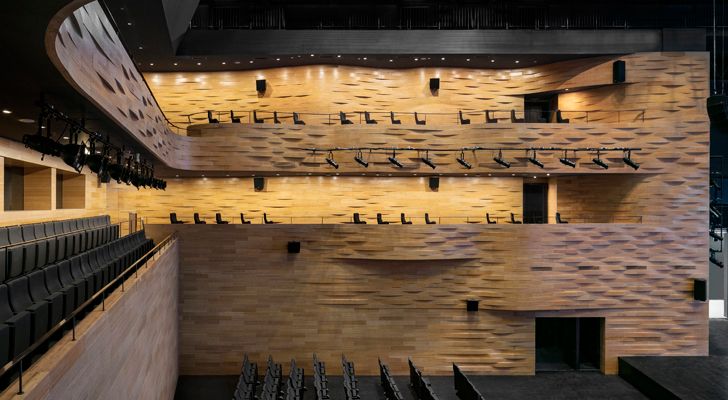 |
| The main stalls seating area in the Multipurpose Hall is retractable to enable a standing audience and even-level functions. Photography: Marc Goodwin |
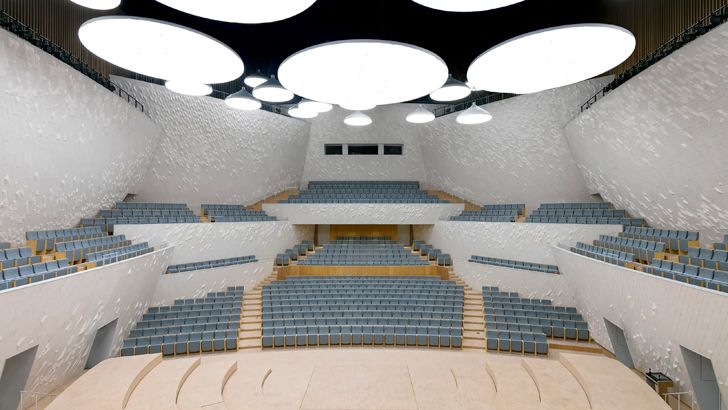 |
| The stage floor of the Concert Hall, as well as the back walls of the stage and choir balcony are made of solid bamboo material. Photography: Marc Goodwin |
The complex geometries of the form and the acoustic research is the result of rigorous scripting that allows for homogeneous surfaces, doubly-curved skins, and accurate positioning of ceramic surfaces and louvers. As such, the Fuzhou SCAC is an inspiring endeavour in interpreting cultural expressions through contemporary means.
Fact File:
Client: Fuzhou New Town Development Investment Group Co., Ltd.
Lead Architects & Designers: PES-Architects
Local Architect: Xu Zongwu, CCEDGC Co. Ltd.
Programme:Opera House (1,600 seats); Concert Hall (1,000 seats); Multi-functional Theatre (700 seats); Art Exhibition Hall, Cinema Centre
Height: 62 metres
Principal Materials: Steel, concrete, bamboo and custom-developed ceramic
Area: Gross area 153,000 sq. m.
Location: Mawei New Town, Fuzhou, China

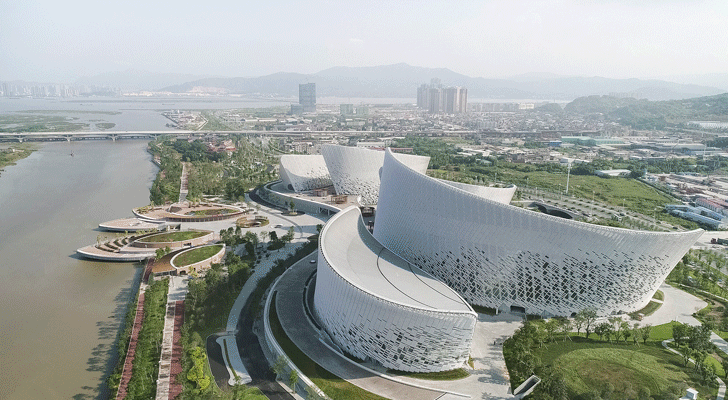

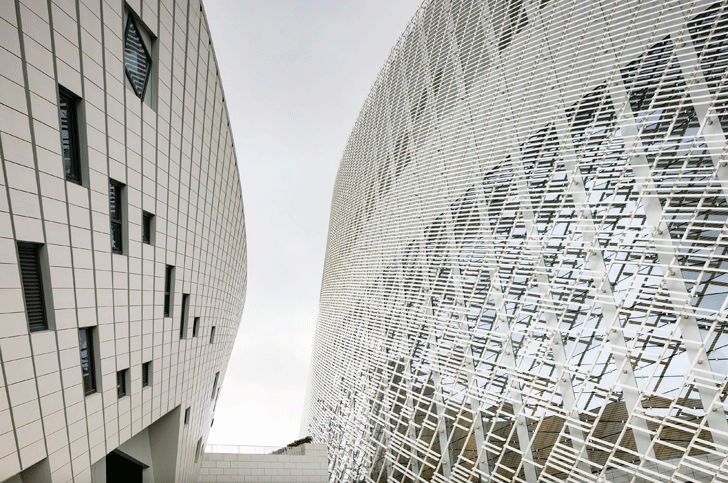
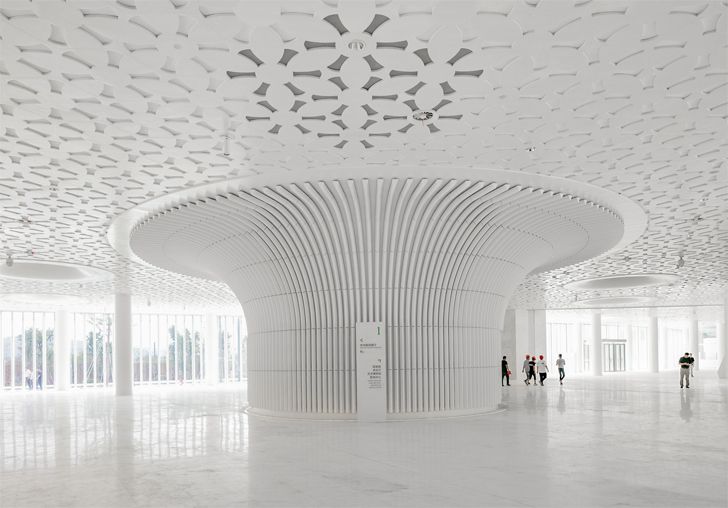
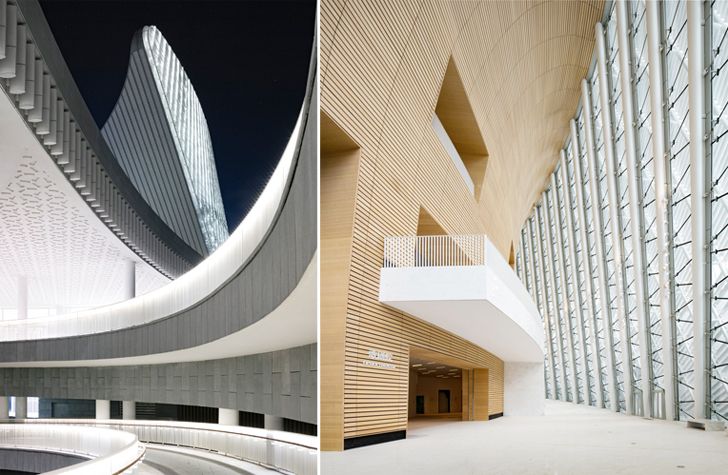
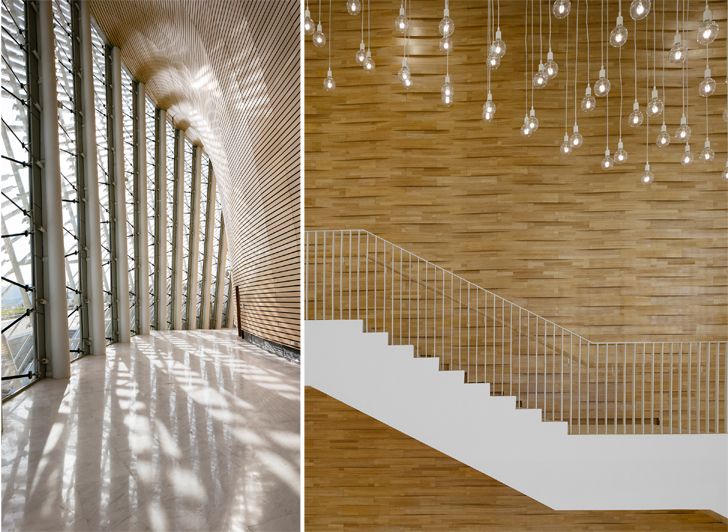
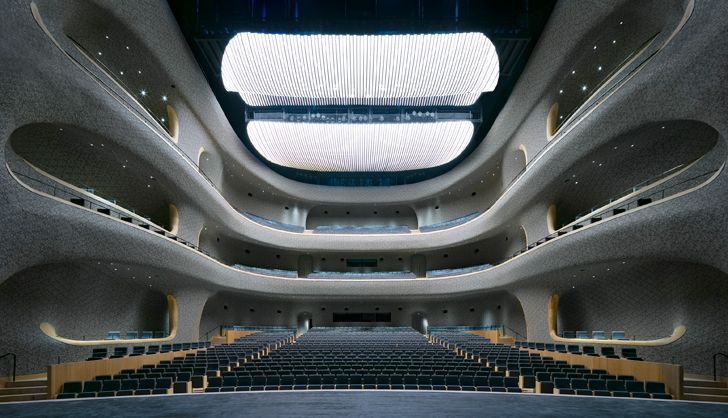
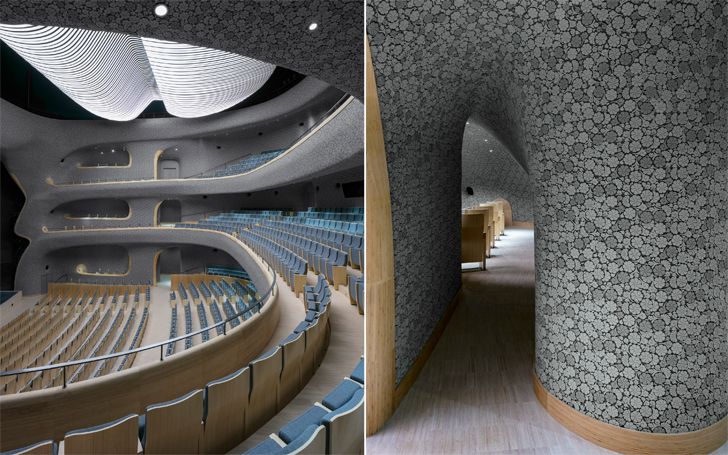
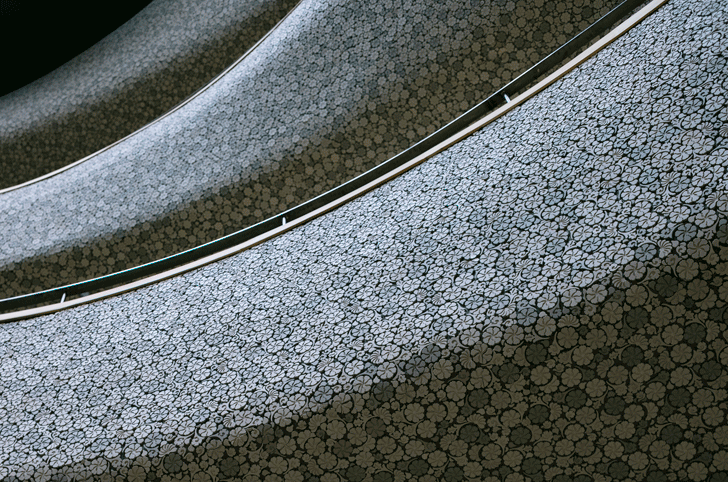
No comments :
Post a Comment